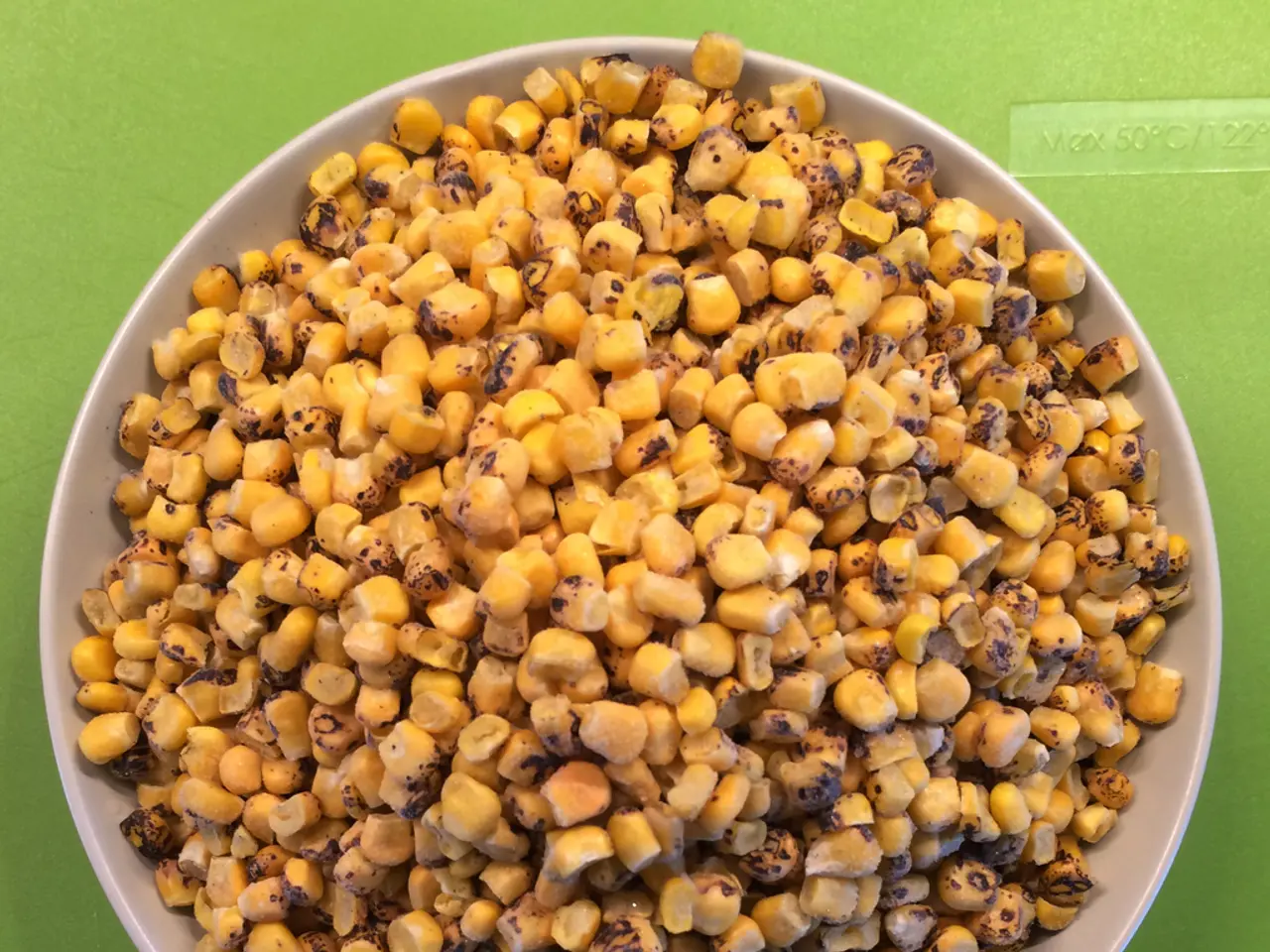Grain Industry Faces Dismay on Monday
In the world of agriculture, recent weather conditions have had a notable but mixed impact on Corn, Soybeans, and Wheat futures markets. This article will focus on the specific observations for HRW (Hard Red Winter) Wheat futures spreads.
HRW Wheat futures spreads have remained relatively stable despite recent moisture conditions. The July 2025 – September 2025 KC HRW Wheat calendar spread averaged around 61.80% to 65.28% of financial full carry during May 19 to June 20, 2025. This level, within a range that does not trigger any change in the maximum premium charge for wheat shipping certificates, indicates that storage cost dynamics and spreads have stayed relatively stable.
Wheat futures prices have experienced recent declines. KC HRW contracts posted losses of 8 to 13 cents in early July 2025. This downward move coincided with reports of the US winter wheat crop harvesting at a pace behind average but conditions being steady at 48% good/excellent. Spring wheat conditions declined slightly, while export inspections showed a modest week-to-week drop in shipments but an increase compared to last year.
Global wheat production outlooks remain supportive yet cautious. Despite some weather challenges, global wheat supplies are projected to increase about 1%, with consumption slightly higher, resulting in only a modest decrease in global stocks. Improvements in production in regions like the EU, Russia, Canada, and Argentina are expected to add supply, partially offsetting weather-related yield concerns. This balanced supply-demand outlook tempers price volatility and helps keep spreads and premiums in check.
For Corn and Soybeans, while specific recent rains impacts are not detailed, generally favorable weather and harvest progress tend to weigh on futures prices if growing conditions improve crop potential. However, the main data here focuses on wheat and HRW spreads.
As of this writing, the spread on the November-January daily close chart for soybeans is at 15.75 cents. Other notable changes include December for wheat being down 11.75 cents, with a similar story in SRW where the September issue (ZWU25) is sitting 12.25 cents lower. September HRW (KEU25) for wheat is down 11.75 cents, while Corn's September issue (ZCU25) is currently 12.75 cents lower.
The tariff deadline has been delayed, and new tariffs are threatened against countries who don't support the US, including the world's largest soybean buyer and producer (China and Brazil). The US dollar index showed a modest gain of 0.20 as of Monday. The November issue (ZSX25) for soybeans dropped as much as 25.5 cents overnight on trade volume of roughly 38,000 contracts.
In summary, recent rains and weather conditions have not significantly disrupted HRW Wheat futures spreads or storage premiums, as spreads remain within stable financial carry ranges. Wheat futures prices have softened amid mixed crop progress reports and steady export demand. The balanced global supply-demand outlook, particularly in regions like the EU, Russia, Canada, and Argentina, helps keep market fundamentals relatively stable. Corn and Soybean futures impacts from recent rains were not specifically detailed but typically would follow similar weather influences on crop conditions and yield potential.
Technology plays a vital role in monitoring and analyzing weather conditions, which can affect agricultural products like HRW Wheat. For instance, satellite imagery and weather prediction models help farmers and traders make informed decisions about planting, harvesting, and trading.
Simultaneously, advancements in technology have provided farmers with precision agriculture tools that optimize irrigation, fertilization, and crop management, enabling them to adapt to unfavorable weather conditions and minimize potential crop losses. These technologies, such as drones, soil sensors, and climate control systems, improve overall farm productivity and resilience.




